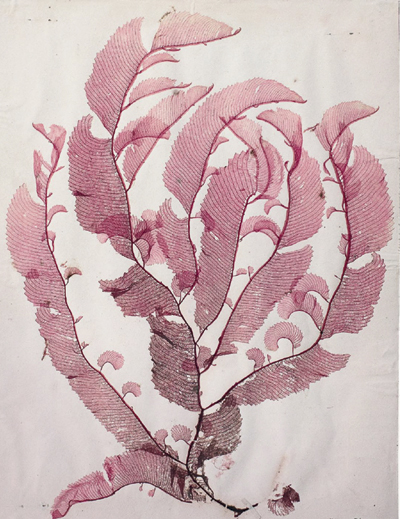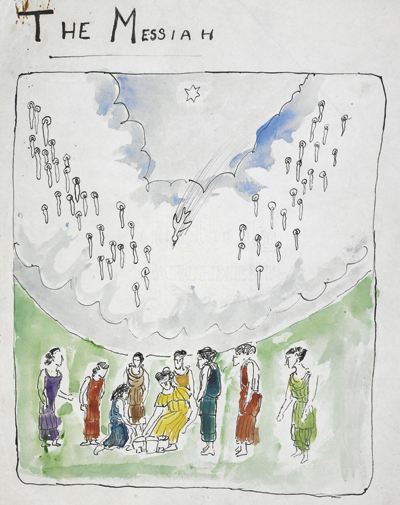On 14 April each year, nori fishermen gather on a hillside overlooking Ariake Bay on Kyushu in southern Japan to pay homage to ‘the Mother of the Sea’. There is a shrine and an altar for votive offerings but this is not a religious rite. The mother in question is Kathleen Mary Drew-Baker, a Lancashire- born algae researcher who, in 1949, discovered the life-cycle of porphyra umbilicalis. Not, perhaps, front-page news in the occident, but this was the key to the cultivation of that dark green papery wrapping around the outside of sushi that is consumed in one form or another in every Japanese household: nori. Kathleen Drew-Baker died in 1956, unaware that her research had laid the foundations for the most valuable aqua-culture industry in the world. Today 10 billion sheets of nori are produced every year in Japan alone.
This is just one of many surprising facts in Professor Ole Mouritsen’s beautifully illustrated guide for the non-specialist to the immense nutritional, medicinal, industrial and environmental properties of seaweed. A passionate evangelist — and self-confessed obsessive — Mouritsen has travelled the world in his search for the ‘seaweed people’ who make their lives out of this astonishing stuff.
Seaweed — marine algae, not plants, as Mouritsen is very keen we should remember — can be used to make biofuel without invading the landspace needed for food crops; as an animal foodstuff it reduces the methane output from cattle; it is used in making dental moulds and wound dressings, in stopping ice cream melting too fast and helping pasta keep its shape. It is a component in toothpaste, shampoo and face cream; it is an important element in the manufacture of gunpowder and glass. And it has long been known to have medicinal benefits, which range from the production of salt and sugar substitutes for sufferers from high blood pressure and diabetes to ongoing research into its potential in treatments for cancer and HIV.
Above all, it is the nutritional qualities of seaweed that Mouritsen wishes to share, and the book has an intriguing section of easy recipes. It seemed a reviewer’s duty to give at least one of these a go and with a bay full of Scottish seaweeds on the doorstep there was no excuse not to. Of course seaweed has been used in this community, as in coastal areas around the world, for fertiliser, food and medicine from time immemorial, and in my wellies I set off for the shore.
Collecting new shoots is ridiculously easy and three minutes’ paddling will give you all you need for Professor Mouritsen’s bladderwrack salad. Within ten minutes it’s blanched, has turned from a dull brown to a pretty green and is dressed and ready to eat. It doesn’t taste of much (though full of iron, iodine, calcium, sodium and magnesium), but it has an interesting crunchy texture, and as Boris Becker might say, nobody died. Tomorrow the sea lettuce (already drying on the Rayburn) and then bring on the winged kelp.
Got something to add? Join the discussion and comment below.
Get 10 issues for just $10
Subscribe to The Spectator Australia today for the next 10 magazine issues, plus full online access, for just $10.
You might disagree with half of it, but you’ll enjoy reading all of it. Try your first month for free, then just $2 a week for the remainder of your first year.












Comments
Don't miss out
Join the conversation with other Spectator Australia readers. Subscribe to leave a comment.
SUBSCRIBEAlready a subscriber? Log in